Grow Borage and Discover Its Medicinal Benefits for Your Garden and Health
Medicinal herbsLooking for the perfect plant to grow? Medicinal herb, pollinator flower, companion plant, and fresh vegetable - Borage Does It All! We’ll walk you through how to grow and harvest borage so you can start using this amazing herb.

Borage is a vigorous self-sowing annual flower with a multitude of benefits. The blue flowers are rich in nectar, which makes them highly attractive to bees. Honey made from the nectar of borage flowers is a delightful treat! Not only is borage known for its many medicinal properties, but it also makes an excellent companion plant and has culinary uses, too. Don’t miss out on the benefits of growing borage in your garden!
How to Grow Borage
- For best results, direct sow borage seeds outdoors after all danger of frost has passed. Choose a location that receives full sun and has well-drained soil.
- Borage develops a deep taproot, so transplanting is not recommended.
- Sow seeds ¼” deep and space 12” apart. Keep the soil moist, and seeds will germinate in 7 to 14 days.
- Borage starts flowering in the late spring to early summer. It will continue blossoming if the flowers are picked regularly.
- Borage is a vigorous self-sower. To prevent self-sowing, snip bloom heads off of any plants you do not want to reseed.

How to Harvest Borage
You can harvest both the borage leaves and flowers. Borage leaves change flavor as they mature and they become hairy. Harvest the leaves while they are still young for the best flavor. Flowers can be harvested as soon as they open.
Dry borage leaves by placing them on a cookie sheet for several weeks away from moisture. Once dried, store in an airtight container, such as a glass jar. The longer the leaves have been stored, the lesser the medicinal properties. Replenish your borage supply annually.
Borage Culinary Uses
The leaves, when harvested young, have a slightly salty, cucumbery flavor and can be eaten cooked, made into tea, or served raw in salads.
Fresh borage flowers make an attractive garnish for salads, sandwiches, and refreshing beverages. The flowers can also be brewed into a refreshing tea.
Borage seeds are also edible and nutritious!
How to Make Borage Tea
Steep 1 tablespoon of dried borage leaves in 1 cup of hot water for 5-15 minutes, depending on your desired taste and potency. Add honey for a touch of soothing sweetness!

Borage as a Companion Plant
Plant borage next to cabbage, cucumbers, strawberries, squash, and tomatoes.
As a companion plant, borage is known to repel tomato hornworms and cabbage worms while attracting pollinators like bees, butterflies, and other beneficial insects!
The strong scent of borage keeps deer and rabbits from eating it.
Borage also adds trace minerals to the soil, such as calcium and potassium, improving soil quality! These minerals are beneficial to the root health of plants like squash and tomatoes.
Borage Medicinal Uses
Borage has many medicinal benefits. Adding borage to your diet regularly can treat hormonal imbalances, as well as regulate your metabolism. Because Borage has calming properties, it can be taken to relieve stress and balance cortisol levels, which is beneficial to those who experience Adrenal Fatigue.
Additionally, Borage is a soothing herb, making it a good choice for many digestive issues, such as IBS and gastritis. It's also a diuretic, meaning it removes excess water and toxins from the body, making Borage a treatment for urinary tract and kidney infections.
Borage has antioxidant properties that help destroy free radicals in the body, which protects the body from aging and certain cancers. The antioxidants can also help control allergies and subdue allergic responses.
In addition to the antioxidant properties, Borage is also an anti-inflammatory and anti-bacterial herb! These two fight hand-in-hand to treat and prevent mouth ulcers, sore throats, bleeding gums, skin infections, wounds, rashes, stings, insect bites, and even inflammation caused by gout and arthritis!
Borage seeds contain a beneficial Omega-6 fatty acid (GLA), which has many positive effects on the body. It protects the brain against neurodegenerative diseases, such as Alzheimer’s Disease. The fatty acid will also treat and prevent macular degeneration. GLA in borage seeds significantly lowers blood pressure, making it an effective treatment for hypertension!
The last significant benefit is Borage’s ability to help break fevers! Borage is a diaphoretic, meaning it induces perspiration by stimulating the sweat glands, making it beneficial for treating colds and respiratory illnesses.
This is not an exhaustive list of the medicinal benefits, just a sampling of how Borage is a great herb to keep in your therapeutic arsenal!
Warnings
Borage leaves contain low levels of pyrrolizidine alkaloids and other compounds that are toxic to the liver, so those with liver disease should not use borage. For some, borage can cause skin dermatitis. Pregnant women and persons with schizophrenia or epilepsy should avoid using borage.
Whether you grow borage for its medicinal uses, companion planting benefits, or just for its flowering beauty, you can’t go wrong with borage. Try growing borage in your medicinal herb garden.
Written by Ashley Clark




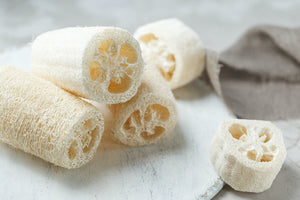

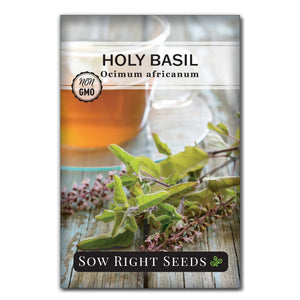
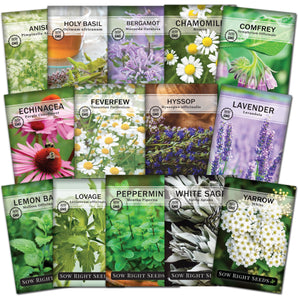
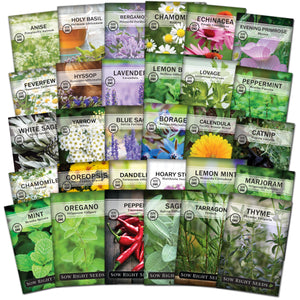
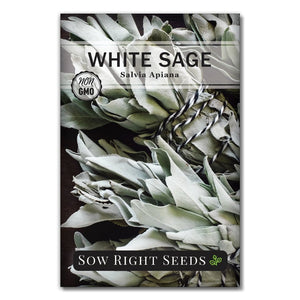
What are the 10 herbs. I would love to grow them all!
Mary – For specific information on using medicinal herbs, I suggest herbal remedy books at your local library. Your librarian may also be able to help you find classes and resources in your area.
Noticed that borage is groin my garden I also have feverfew! How do I use these for medical usage?
Leave a comment